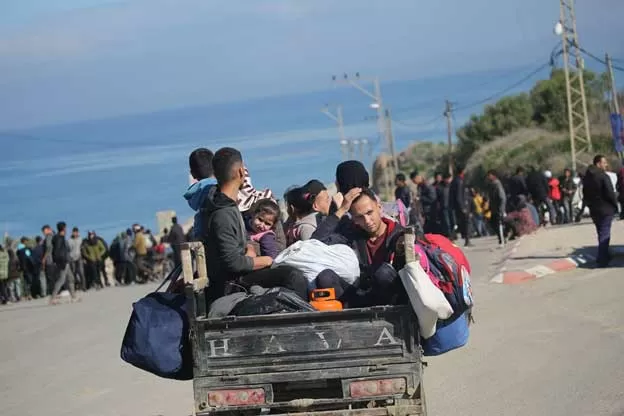On March 1, the first phase of the Israel-Hamas ceasefire was set to expire, bringing hope for a lasting peace in the region. However, as the deadline approaches, the situation on the ground remains tense and uncertain. Israel’s continued blockade of humanitarian aid to Gaza and Hamas’ refusal to release more hostages until the second phase of the ceasefire goes into effect, raises concerns about the long-term feasibility of the agreement. Adding to the complexity of the situation is the recent inflammatory rhetoric from U.S. President Donald Trump, which has further complicated the delicate balance of power in the region.
The ceasefire agreement, brokered by Egypt, was seen as a glimmer of hope in the ongoing conflict between Israel and Hamas. It aimed to bring an end to the violence that has plagued the region for years and provide much-needed relief to the people of Gaza who have been suffering under the blockade. However, as the first phase of the ceasefire comes to an end, it is clear that there are still many challenges to overcome before a lasting peace can be achieved.
One of the major obstacles to the success of the ceasefire is the continued blockade of humanitarian aid to Gaza by Israel. The blockade, which has been in place since 2007, has severely restricted the flow of essential goods and services to the people of Gaza, causing immense suffering and hardship. Despite international pressure, Israel has refused to lift the blockade, citing security concerns. This has not only hindered the delivery of much-needed aid but has also hindered the reconstruction efforts in Gaza, leaving thousands of people without access to basic necessities.
In addition to the blockade, Hamas’ refusal to release more hostages until the second phase of the ceasefire goes into effect has also raised concerns about the long-term feasibility of the agreement. The release of hostages was a key demand of Israel in the negotiations, and their continued detention has been a major point of contention. While Hamas has stated that they will release the hostages once the second phase of the ceasefire is implemented, the delay has caused frustration and uncertainty among the international community.
The recent inflammatory rhetoric from U.S. President Donald Trump has further complicated the situation. His decision to recognize Jerusalem as the capital of Israel and move the U.S. embassy there has been met with widespread condemnation from the international community. This move has not only angered the Palestinians but has also strained the already fragile relationship between Israel and the Arab world. It has also raised doubts about the U.S.’s ability to act as a neutral mediator in the peace process.
Despite these challenges, it is important to remember that the ceasefire agreement is a step in the right direction. It has provided a much-needed respite from the violence and has opened up channels for dialogue between Israel and Hamas. The fact that both sides were able to come to the negotiating table and agree on a ceasefire is a positive sign and shows that there is still hope for a lasting peace in the region.
However, for the ceasefire to be successful in the long run, both Israel and Hamas must fulfill their commitments. Israel must lift the blockade and allow for the free flow of goods and services into Gaza, while Hamas must release the remaining hostages and work towards a peaceful resolution with Israel. It is also crucial for the international community to continue to support the ceasefire and provide aid and assistance to the people of Gaza.
In conclusion, while the first phase of the Israel-Hamas ceasefire may be coming to an end, the journey towards a lasting peace is far from over. The challenges and obstacles that lie ahead are significant, but with determination and commitment from all parties involved, a peaceful resolution can be achieved. Let us hope that the second phase of the ceasefire will bring about positive changes and pave the way for a brighter future for the people of Gaza and the region as a whole.



